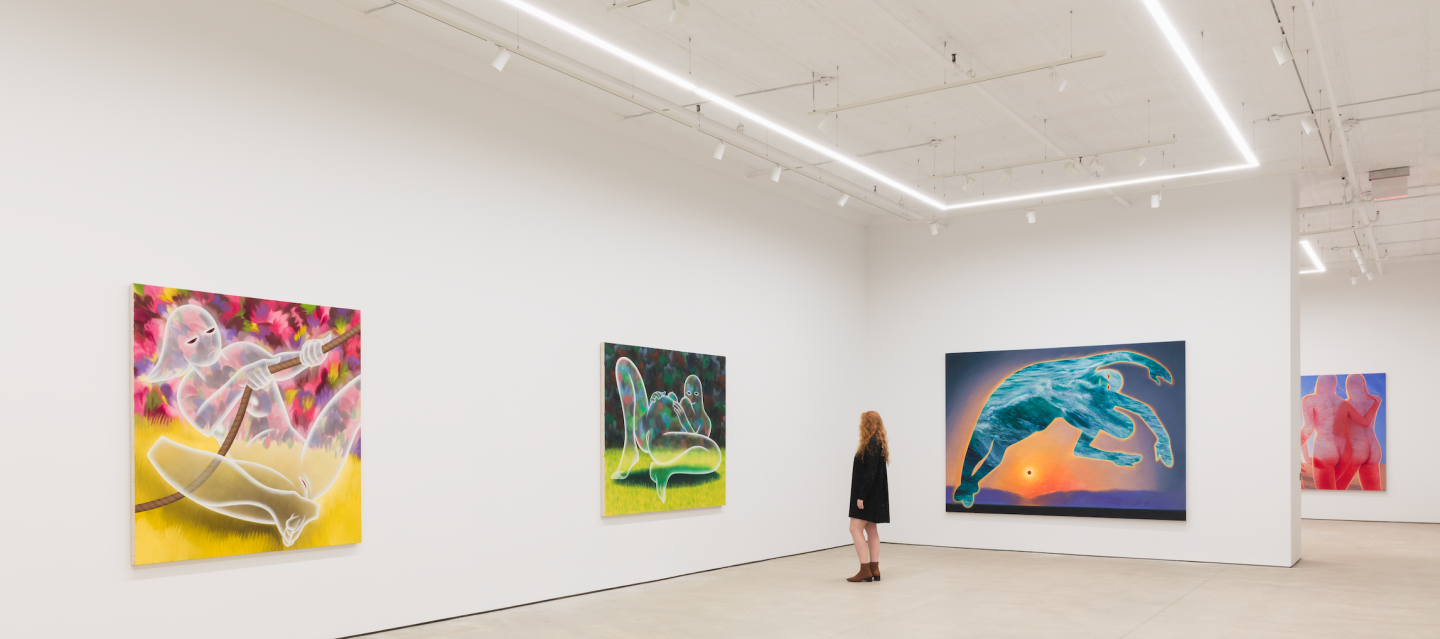It’s not every day you find yourself standing between two paintings of trolls waving at one another, but that’s exactly what you would have found in Robin F. Williams’s recent show, “Out Lookers,” at P·P·O·W Gallery in New York. Challenging how women are often depicted as scapegoats or untrustworthy figures in popular culture, the artist’s larger-than-life ghosts, witches and supernatural beings bear important messages about social justice, sustainability and issues facing women throughout history. A climate activist and founding member of the environmentalist group Artists Commit, Williams speaks about sustainability in the art industry and the importance of embracing time off.
Annabel Keenan: Sustainability has become a pressing issue for many artists and galleries over the last year and a half. I’d love to talk about how you approach the topic from an intersectional standpoint, weaving in different layers that allow the viewer to interact on personal levels.
Robin F. Williams: This is really important to me. I want viewers to find their own connections to the work depending on their lived experiences. This is the power of art. I hope my works knocks the viewer off their center in a way that's exhilarating and generative and inspiring. The pieces in “Out Lookers” are concerned with our relationship with the environment, more specifically our understanding of our bodies as separate from the environment and the problems that arise from that hierarchical misconception. We think of nature as something we can control, dominate and exploit indefinitely. The environment is just our own larger body. In this exhibition, the solidness of the figures is purposefully ambiguous. There’s no clear distinction between their bodies and the environment. They’re all windows onto a larger system that connects them all.
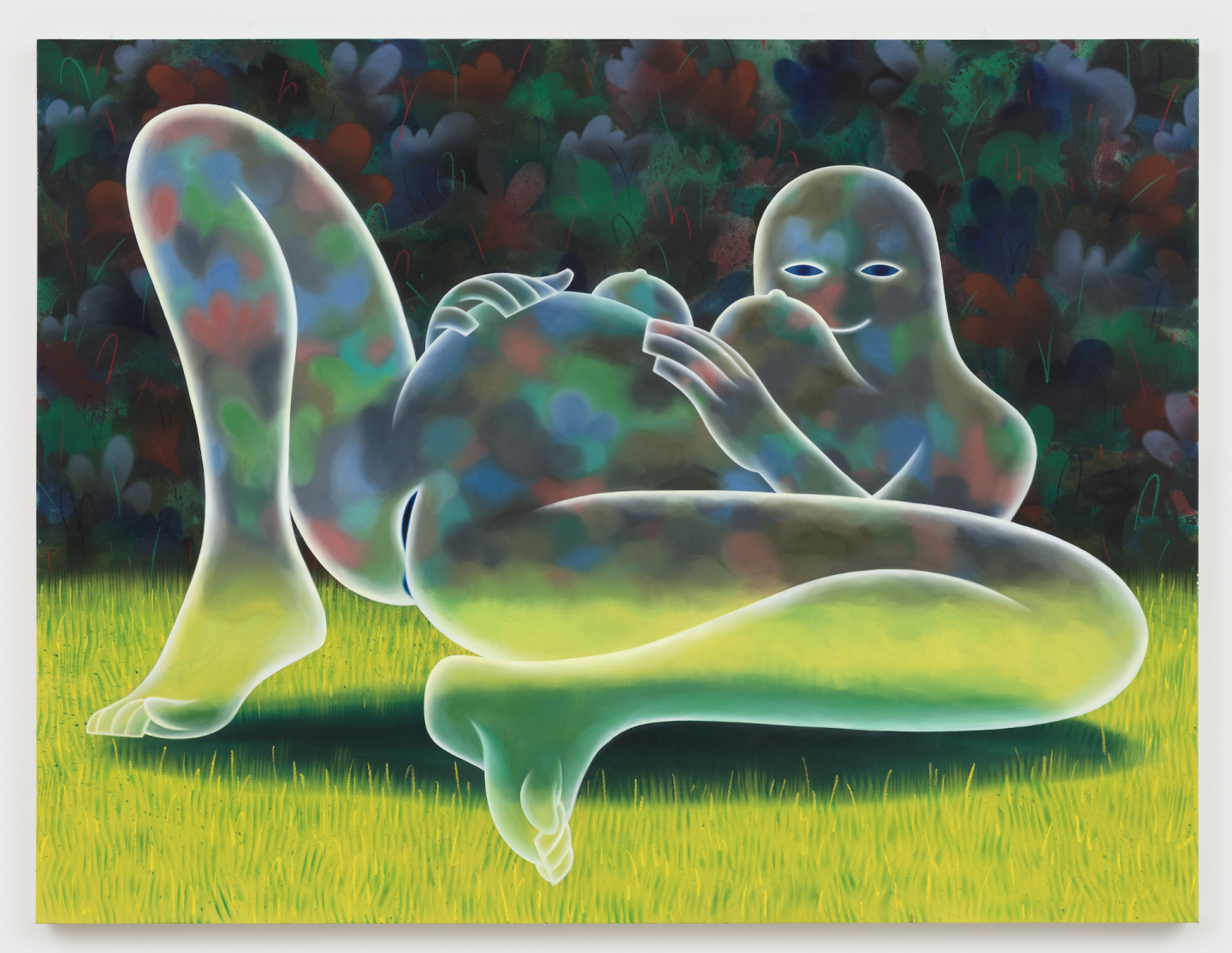
AK: A Sound Around No One has this beautifully textured, speckled figure screaming with intense determination. I viewed the figure as someone trying to sound the alarm about climate change only to be left unheard.
RFW: That was certainly something I was thinking about. I want every painting to function with multiple meanings. The title is a song lyric from an album that Fiona Apple released at the beginning of the pandemic and it’s my understanding that “a sound around no one” references being abused in romantic relationships, or abuses of power in general. I wanted to add this feminist layer with a female body making a sound that is not received or not heard.
AK: The work has a few art historical references as well. Can you explain these?
RFW: There are two major references at play. The first is Edvard Munch’s The Scream. The inherent silence of that painting is very eerie. I think that’s what is so captivating about it. The other reference is Francisco Goya’s depiction of Saturn eating his own son, which makes me think of the past devouring the future, an apt metaphor for climate change. The screaming figure in my painting can be viewed as a whistleblower. She’s in the position of Saturn eating his son, but she's not devouring anything. She's doing the opposite. She's letting out a scream. In this way, she isn’t the past or the future, she is the present moment. That metaphor can extend to a lot of the issues that have been ignored and are demanding to be reckoned with now.
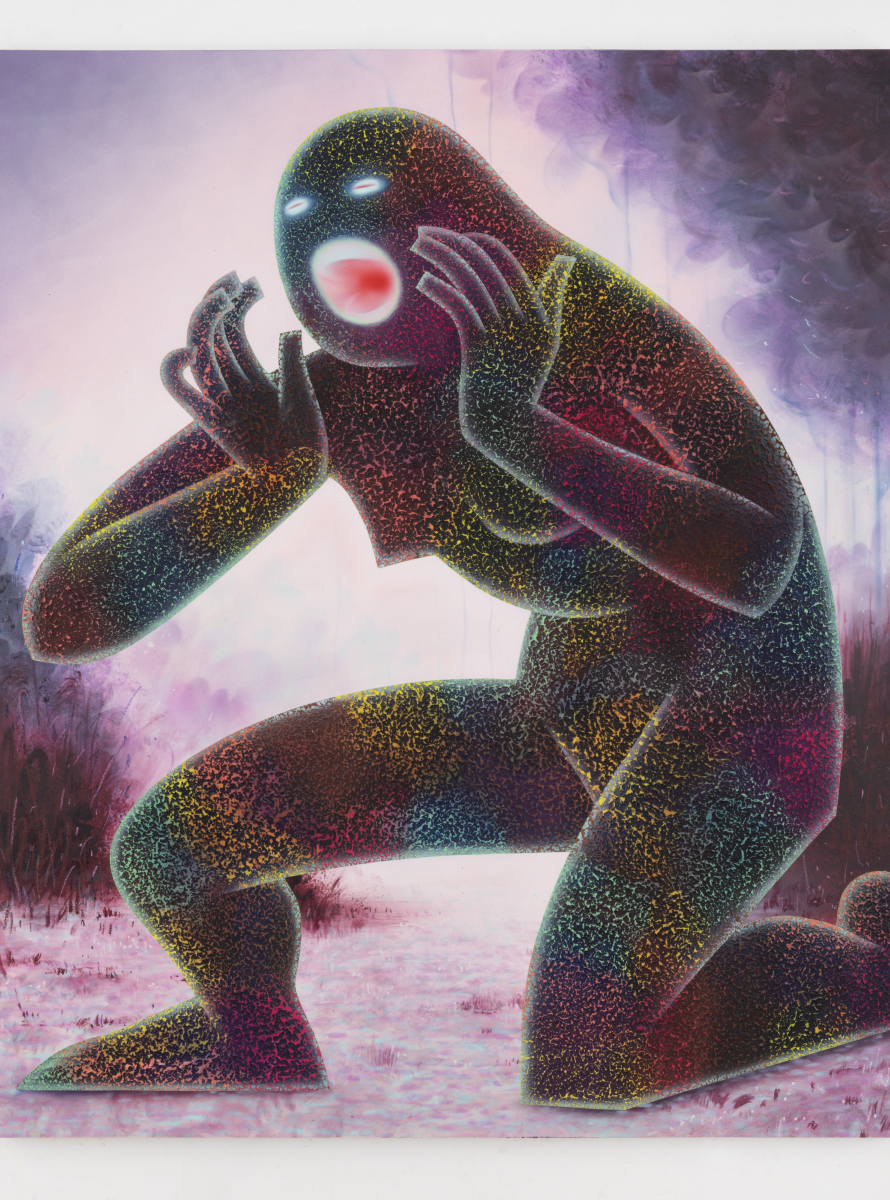
AK: There were two troll paintings hung directly across from each other at P·P·O·W that were waving to one another above the viewer’s head. Where did the troll idea come from?
RFW: Those trolls are based on a series of late ’50s to the early ’70s pinup illustrations by Duane Bryers of a woman called Hilda. They were part of the antiquated fat joke genre that suggested that a woman couldn’t be both fat and sexy without also being ridiculous. The truth is, Hilda is magnetic. She appears genuinely happy in a sensual way despite the comedic tone. It felt like the intention of the illustrator was to celebrate Hilda, but he knew he had to remain complicit in this cultural consensus that fat women were a joke. When I look at them, Hilda is getting the last laugh. She’s irresistible and fun and free. She truly transcends the joke. She’s laughing at us for missing her power.
AK: The titles are Troll and Trolling, which have new meanings today.
RFW: I was definitely thinking about what the word troll means now, specifically from a gender standpoint. When a man is called a troll, he is usually harassing a woman on the internet or is some sort of agent of chaos. When troll is directed at a woman, it's an insult about her appearance, a way to call her ugly. I wanted the trolls to reclaim that term. They’re trolling the viewer in the sense that when you walk in, you assume they're waving at you.
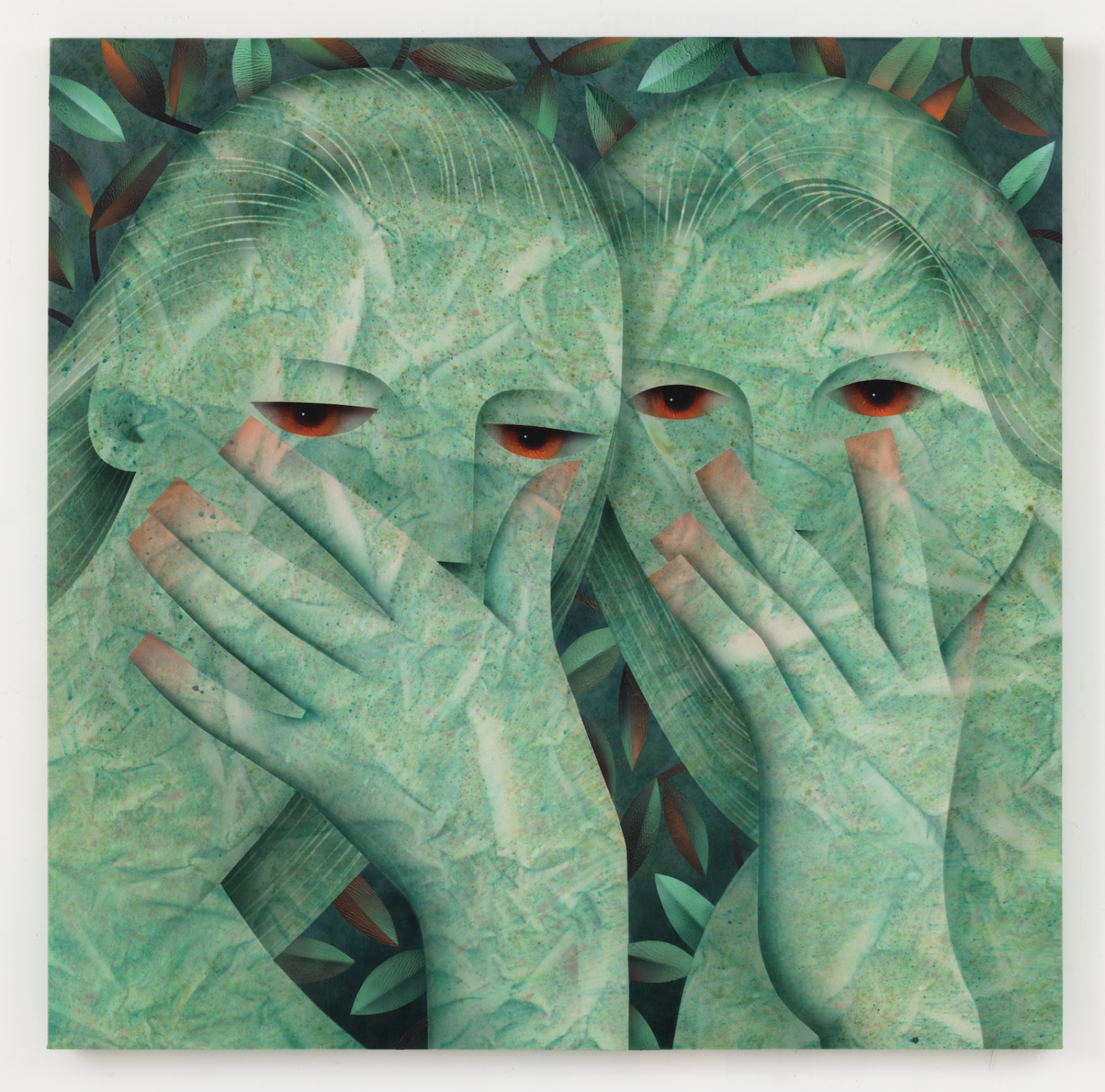
AK: This is a nice parallel to your point about a hierarchy of bodies. The viewer is incidental standing between the waving trolls, just as we are incidental in relation to the natural world, yet society has been set up to think the world is here for us to consume. Your work as a climate activist includes being a founding member of Artists Commit, which shares resources on sustainable art practices and advocacy for these practices in institutions. How did climate activism become a formal part of your art practice?
RFW: It really began in 2020 with a limited edition print I did with Pace Prints to support the Environmental Defense Fund and celebrate the 50th anniversary of Earth Day. Initially, I thought I could start my own climate coalition and get other artists on board. People kept pointing me toward a new group called Galleries Commit. I realized they'd already done so much incredible work that it made sense for me to join them, and then organically Artists Commit formed. The pandemic forced us all to stay home, and something really important developed from that pause. It gave everyone a chance to think about how they wanted to respond to what was changing around them.
AK: You worked with Artists Commit to create a public Climate Impact Report for “Out Lookers.” What was involved with this report?
RFW: I felt really lucky that P·P·O·W was on board from the start. The owners, as well as several employees and artists they represent, had already signed the climate commitment with Galleries Commit and Artists Commit, so when I approached P·P·O·W about the Climate Impact Report, they were more than willing to participate. To create the Climate Impact Report, I shared my studio’s climate policy and P·P·O·W worked with Galleries Commit, specifically Laura Lupton, to set up a path for the gallery to map the exhibition’s carbon emissions and waste footprint. We’re trying to shift the culture of the art world towards climate awareness in an accessible, integrated way.
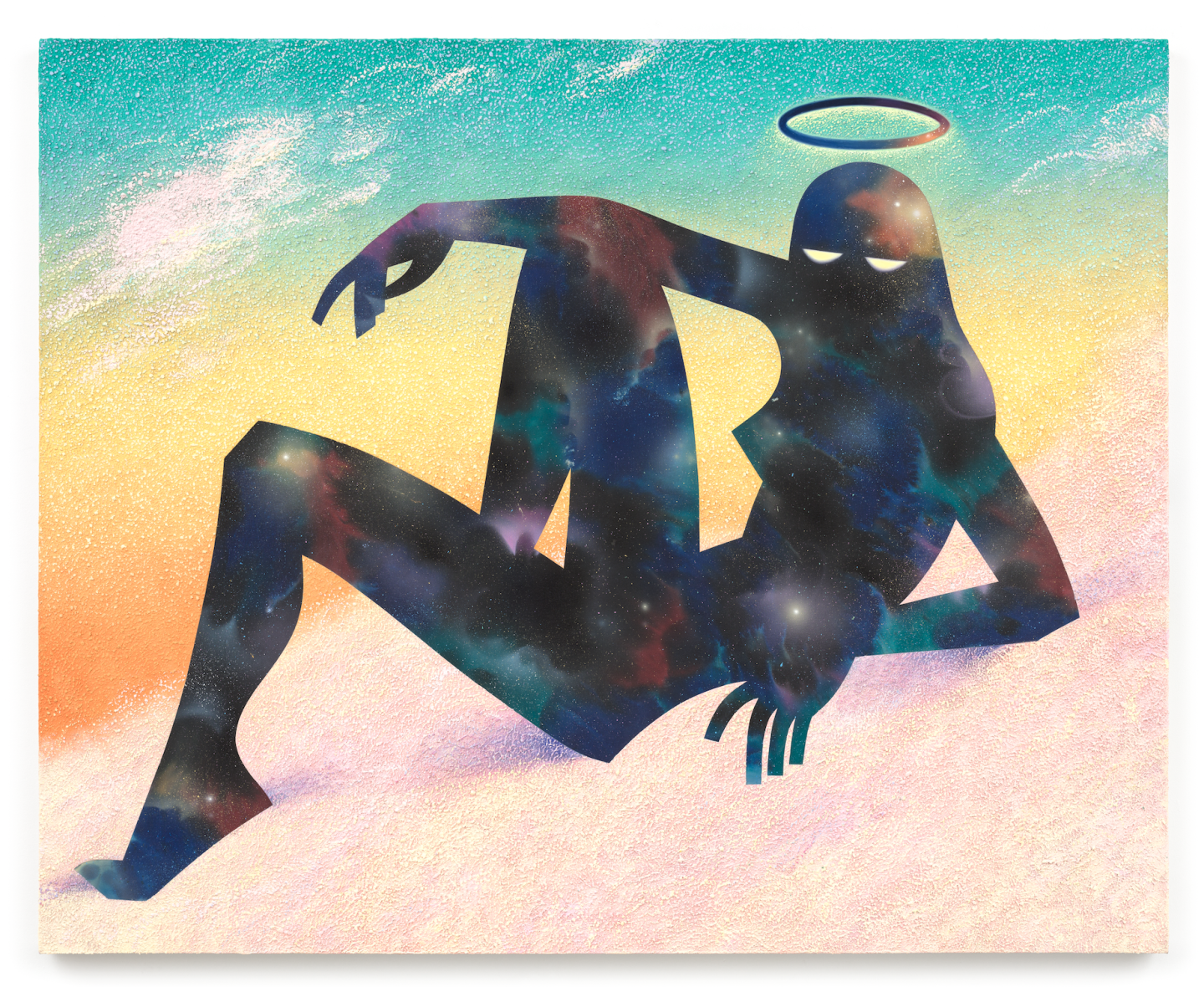
AK: Your show also included a donation to support permanent old-growth forest conservation through Galleries Commit X Art To Acres. How does this donation work?
RFW: It would be considered a carbon offset, but the carbon footprint of my exhibition is relatively low, so we are coming up with a number that feels substantive. I also had a show recently at Pace Prints that included an edition where the proceeds support Art to Acres.
AK: “Out Lookers” and your show at Pace Prints just came down; what are you up to now?
RFW: I’m giving myself time to not have any pressing obligations. One of my biggest takeaways from Galleries Commit and Artists Commit is that slowing down is one of the best things we can do for the planet. I think we can all learn from that and understand the importance of taking time to just pause.

